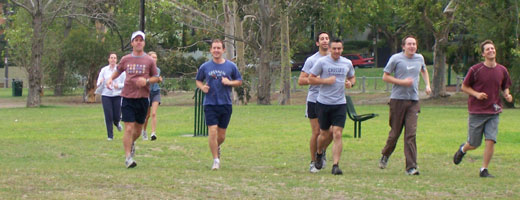Tips, news & views
05:30 1 peach, handful of grapes, handful of cherries
09:30 Protein shake w/ carb mix added
09:45 2x healthy nut bars
10:30 bacon, eggs, tomato, mushrooms
12:00 2x cafe latte, raisin toast
16:45 Snickers bar
17:30 Chicken salad
This is a so-so day. It started out rather well. Things when downhill with the two coffees and raisin toast (the cost of meeting colleagues at a cafe). And there's really no excuse for the Snickers bar, it was an impulse. I got back on track with a healthy afternoon meal but then forgot to list my evening meal. As I said, so-so.
I don't know if this will help you understand what a good day is in itself. So, here's an idea of what is better than my average day above:
05:30 1 peach, handful of grapes, handful of cherries
09:30 Protein shake w/ carb mix added
09:45 Handful of almonds and seeds
10:30 Omelette w/ tomato, mushrooms and spinach
12:00 Peppermint tea
16:45 Tub of natural yoghurt w/ fresh berries
17:30 Chicken salad
20:00 Grilled salmon w/ seasonal vegies
One last note: don't get so carried away with monitoring your diet that you stop enjoying your food. There is plenty of room to enjoy the flavours of a healthy diet.









Post a Comment
Create a Link
<< Home